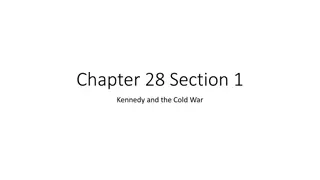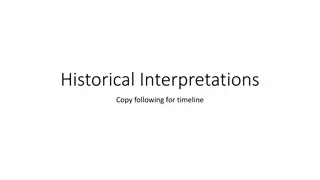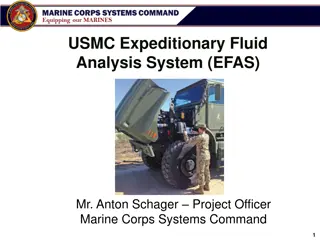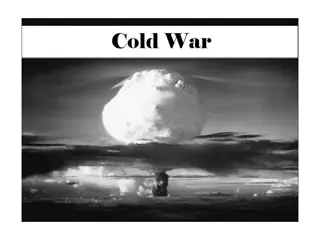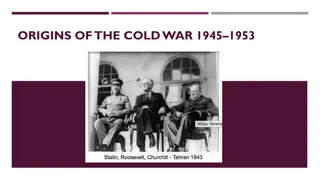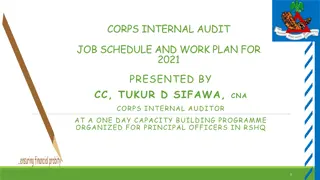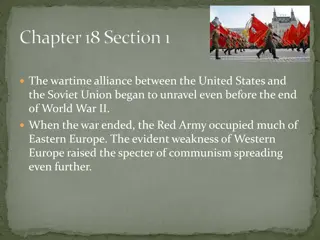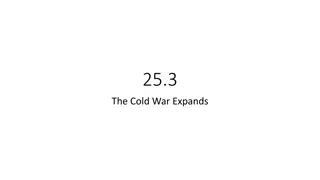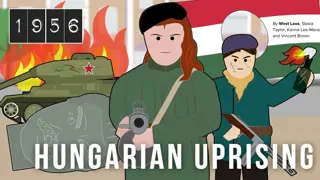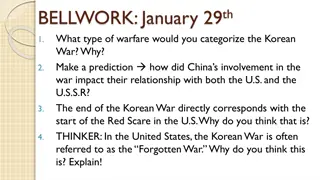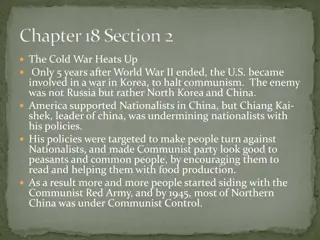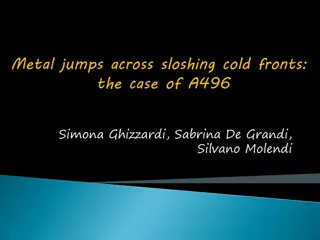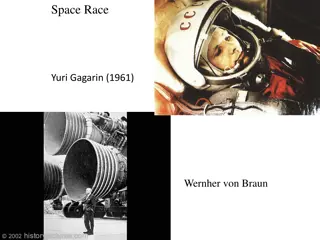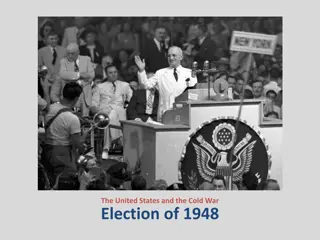CONELRAD & The Ground Observer Corps: Cold War Era Civil Defense
This content delves into the history of CONELRAD (CONtrol of Electromagnetic RADiation) and the Ground Observer Corps during the Cold War era. It explores the fear of nuclear war, the role of broadcast stations in emergencies, and the involvement of civilian volunteers in monitoring for potential aerial threats.
Download Presentation

Please find below an Image/Link to download the presentation.
The content on the website is provided AS IS for your information and personal use only. It may not be sold, licensed, or shared on other websites without obtaining consent from the author.If you encounter any issues during the download, it is possible that the publisher has removed the file from their server.
You are allowed to download the files provided on this website for personal or commercial use, subject to the condition that they are used lawfully. All files are the property of their respective owners.
The content on the website is provided AS IS for your information and personal use only. It may not be sold, licensed, or shared on other websites without obtaining consent from the author.
E N D
Presentation Transcript
CONELRAD (CONtrol of Electromagnetic RADiation) Those Little Triangles on 1950s Radio Dials By Brian Belanger, Curator bbelanger@ncrtv.org
The Ground Observer Corps During WW II, 1.5 million civilian volunteers watched for German or Japanese airplanes with binoculars The second GOC was organized in 1950 to watch for Russian bombers
The motivation for CONELRAD: Cold War era fear of nuclear war Low-altitude Russian bombers could attack from across the North Pole and come in under the radar screen. The enemy could home in on broadcast stations using direction finding equipment
The motivation for CONELRAD: When a Russian attack is launched, we must turn off radio and TV transmitters!
CONELRAD Announced by President Truman in 1951 In a wartime emergency, broadcast stations had to leave the air Designated emergency broadcast stations (Key Stations) would provide civil defense advice on 640 and 1240 kHz.
CONELRAD The key stations would take turns broadcasting, so DF could not be used Telephone lines would be used to coordinate key stations
A nationwide advertising campaign (print and broadcast) was launched to make people aware of CONELRAD
Amateur Radio Beginning in 1957 ham operators were also required to leave the air in a Conelrad emergency Some purchased Heathkit Conelrad alarm kits Some left an AM radio playing in the background Some ignored the regulation
The DC region and WTOPs role Granville Klink s WTOP scrapbooks at the NCRTV Museum provide insight WTOP was involved in developing plans and hardware for CONELRAD stations and was a key distribution point for tests and emergency messages
The DC region and WTOPs role Five 640 kHz stations and five 1240 kHz stations were selected Random switching at ~ 2-minute intervals via telephone lines had been intended, but was never implemented
Why did Conelrad end? Precision guided ICBMs in the 1960s made bombers with direction finding obsolete! Broadcast stations no longer needed to shut down during an attack. But civilians still needed to be informed about what to do in an emergency. In the 1960s a new emergency broadcasting system was developed.
The Emergency Broadcasting System EBS stations authorized to broadcast emergency information were called Common Program Control Stations (CPC stations) Stations had to have an EBS receiver. If a 20 second burst of audio tones (853 and 960 Hz) was received, an alarm would go off. Non-CPC stations had to monitor a CPC station. Motorola DS-9660B CONELRAD receiver
False Alarms (1955, 1959, 1971) 1950s false alarms quickly corrected 1971 NORAD HQ broadcast the wrong tape in a routine EBS test Since it occurred at the regularly scheduled test time, most stations assumed it was a false alarm
What do we have today? EBS has evolved and has been upgraded A revised Emergency Alert System began in 2012 Today FEMA is in charge of emergency alerts to civilians Radio stations today broadcast NWS tornado warnings
If you see a radio with triangles at 640 and 1240, you know it was from the 1950s!
THE NATIONAL CAPITAL RADIO & TELEVISION MUSEUM 2608 Mitchellville Road Bowie, MD 20716 301-390-1020 ncrtv.org info@ncrtv.org
About the Museum Founded by the Mid-Atlantic Antique Radio Club Opened in June 1999 Free parking, modest admission charge Visitors from all 50 states and 30 foreign countries Research library - thousands of books and magazines (offsite) Restoration shop Open Fridays 9 to 4, Saturdays and Sundays from noon to 4
Become a Member! $25 per year (tax deductible if you itemize deductions) Benefits: Quarterly journal Dials and Channels Invitations to special events Discounts on museum shop purchases Bi-weekly lectures via Zoom Artifact of the Week Help to preserve radio/TV history
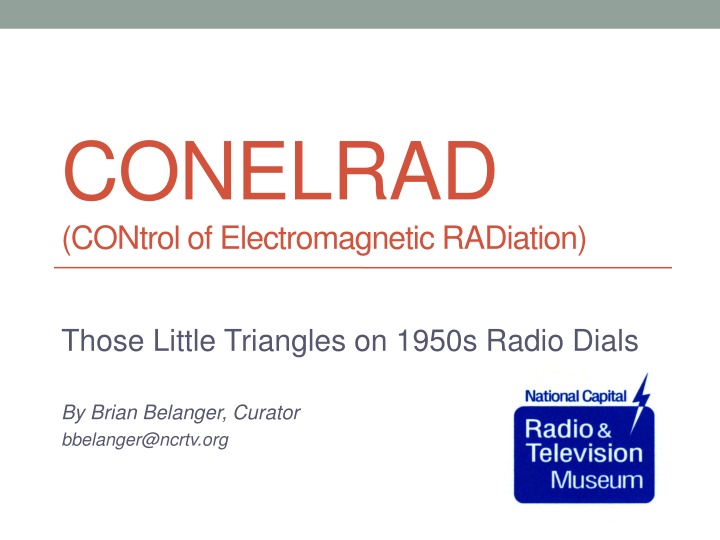

![❤[PDF]⚡ Civil War Talks: Further Reminiscences of George S. Bernard and His Fel](/thumb/20551/pdf-civil-war-talks-further-reminiscences-of-george-s-bernard-and-his-fel.jpg)
